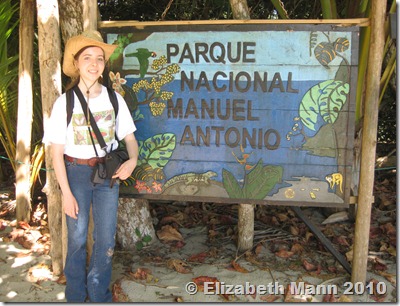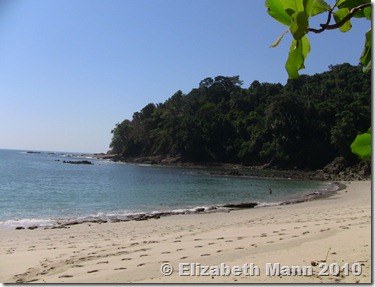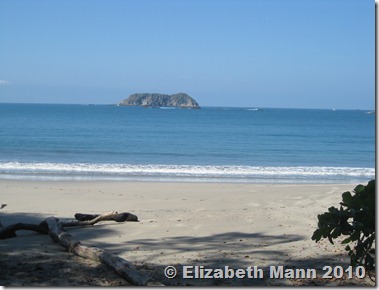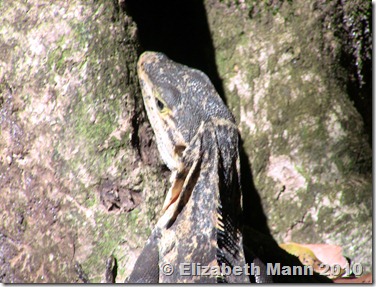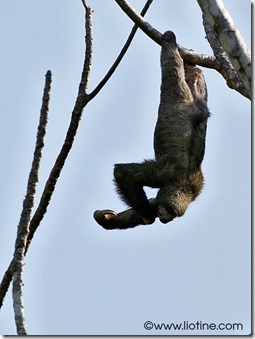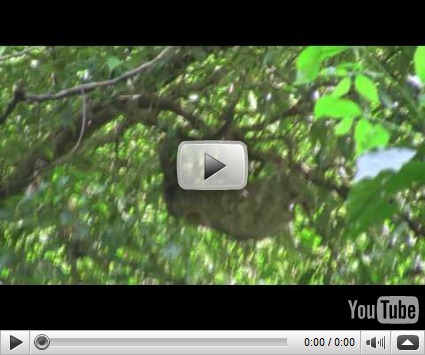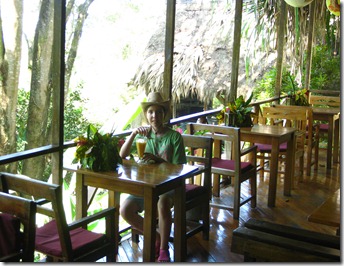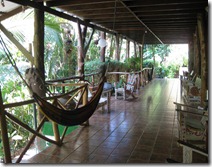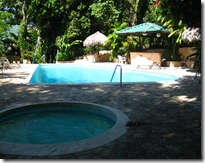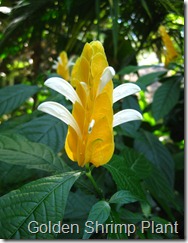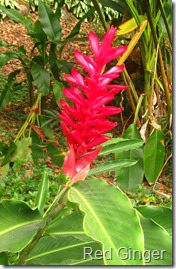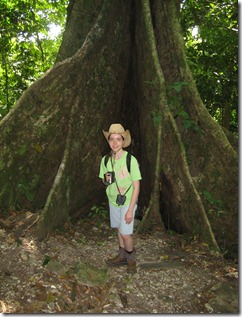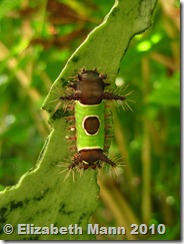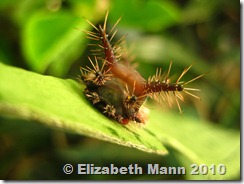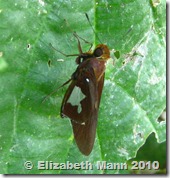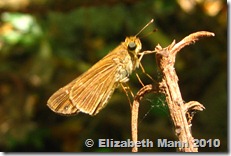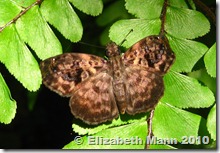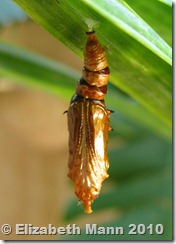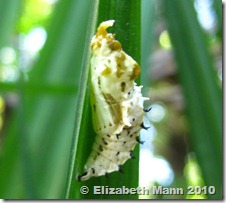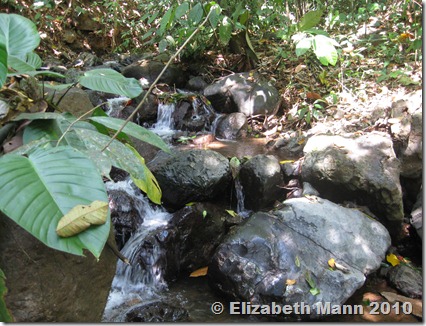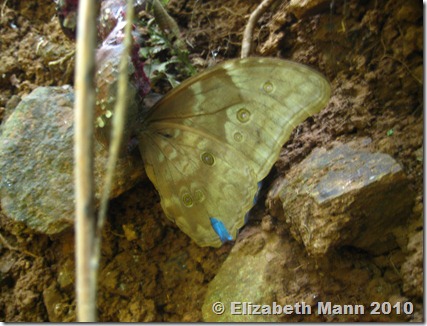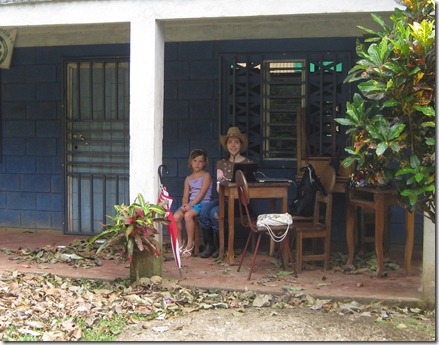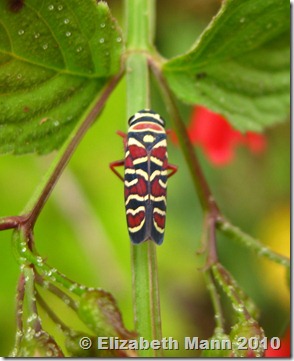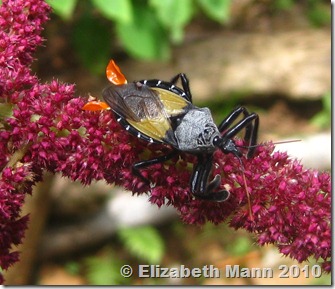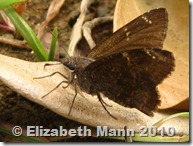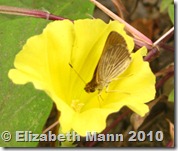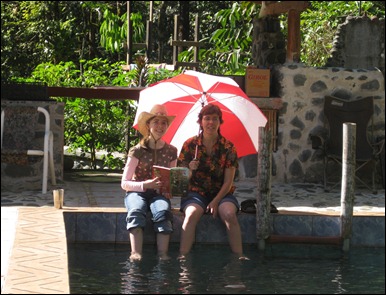
After a morning full of hard work, my mom and I would cool off by submerging our legs in the fresh creek water in the pool. An umbrella was a useful tool for protecting ourselves from the unforgiving sun.
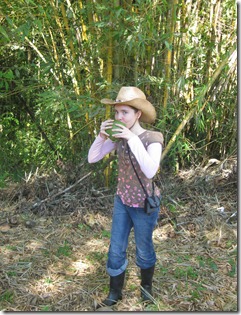
Coconut milk fresh from a coconut tree was another way to cool off. With the constant sweating, keeping hydrated is very important. We drank lots of water and consumed juicy fruits to supply our body with enough liquids.
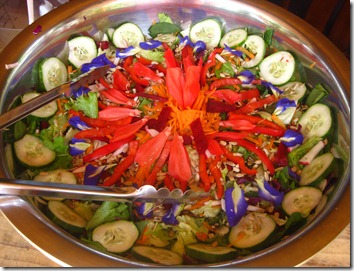
At the VerdEnergia community we stayed at, the food is either grown on their land or purchased at the local market. The salad above contained greens from the garden, cucumbers, and was decorated with the purple flowers of a Butterfly Pea plant and the red flowers of a Hibiscus. The edible flowers were quite tasty!
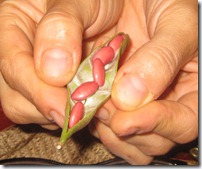
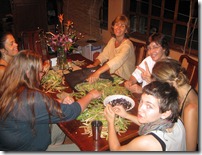
Another vegetable grown right in the garden were beans. The hundreds of pods had to be picked off by hand. Then the pods had to be opened, the beans were next soaked, cooked, and finally eaten! The beans inside each pod ranged in color from purple, to red, pink, and green. The remaining pod around the beans were recycled back into the compost pile.
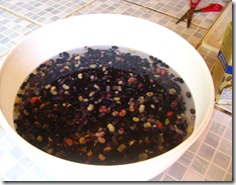
An interesting fact I learned is that beans have to be soaked over night or at least five hours to release the gases.
Caterpillar Research
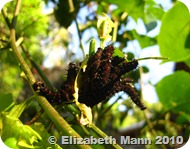
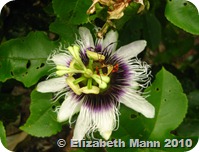
After some rest and food, I was ready to continue my study of the Dione juno caterpillars I had found eating the leaves of a passionvine plant. The previous morning (1/14/10) I had put some of the caterpillars inside a rearing container along with a fresh cutting of their food plant.
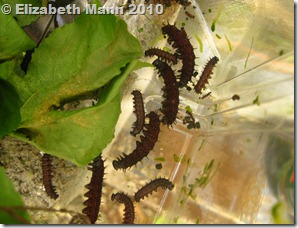
On that same day, I learned the hard way about the intensity of the sun. My caterpillars over heated inside the plastic container! I was very upset, but learned from my mistake and put the next caterpillars in a shady location.
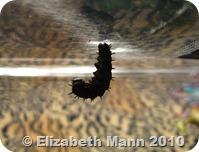
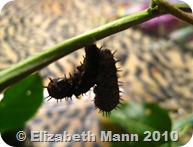
Now fast forwarding back to the afternoon of 1/15/10 at precisely 2:50 pm, I was having greater success. Inside the container were three healthy caterpillars in their fifth instar nearing pupation. My goal was to photograph a Dione juno to share with all my blog readers. After several hours of waiting, the three caterpillars had made a silk pad and were now hanging. I was so excited! I had worked hard and waited days to reach this point. The two caterpillars on the right look like twins because the second caterpillar used silk to connect itself with the first hanging caterpillar. How comical looking!
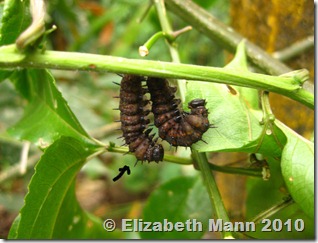
The arrow shows the first caterpillar who is becoming straighter and more outstretched making it look like an ‘l’. This means in is very close to making a chrysalis. The second caterpillar is still arched like a ‘J’.
The Mysterious Disappearance
To complete the story of the three Dione juno caterpillars, I will jump to the next day 1/16/10 at 11:12 am. I was entering the greenhouse where I had been keeping my precious caterpillars. I opened the container expecting to find three chrysalises, but instead to my horror I found an empty container! The two caterpillars that had been hanging on a stem inside were gone.
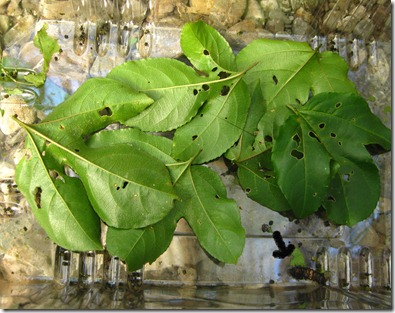
I frantically searched the container for evidence. In grief I picked up one remaining caterpillar that lay lifeless at the bottom of the container (arrow points to its body above).
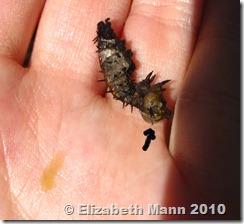
The healthy caterpillar that had been hanging at the top of the container was now dead. Someone had ripped it from the top of the lid and in the process killed it. The arrow points to the damaged head. Red and green liquid oozed out of its body. Whoever had tried to free the caterpillars had ended up causing their death. There is a certain way to remove hanging caterpillars or chrysalises and they did not no how. This person’s beliefs that all creatures should be free actually cause it’s death and resulted in the destruction of my research project.
Fact: Only 10% of butterfly eggs in the wild survive to be adult butterflies. By raising them in captivity this percentage of survival is raised to about 90% percent survival rate.
On March 11 we are going to Costa Rica again! My father and I will be doing a presentation at Earth University.
